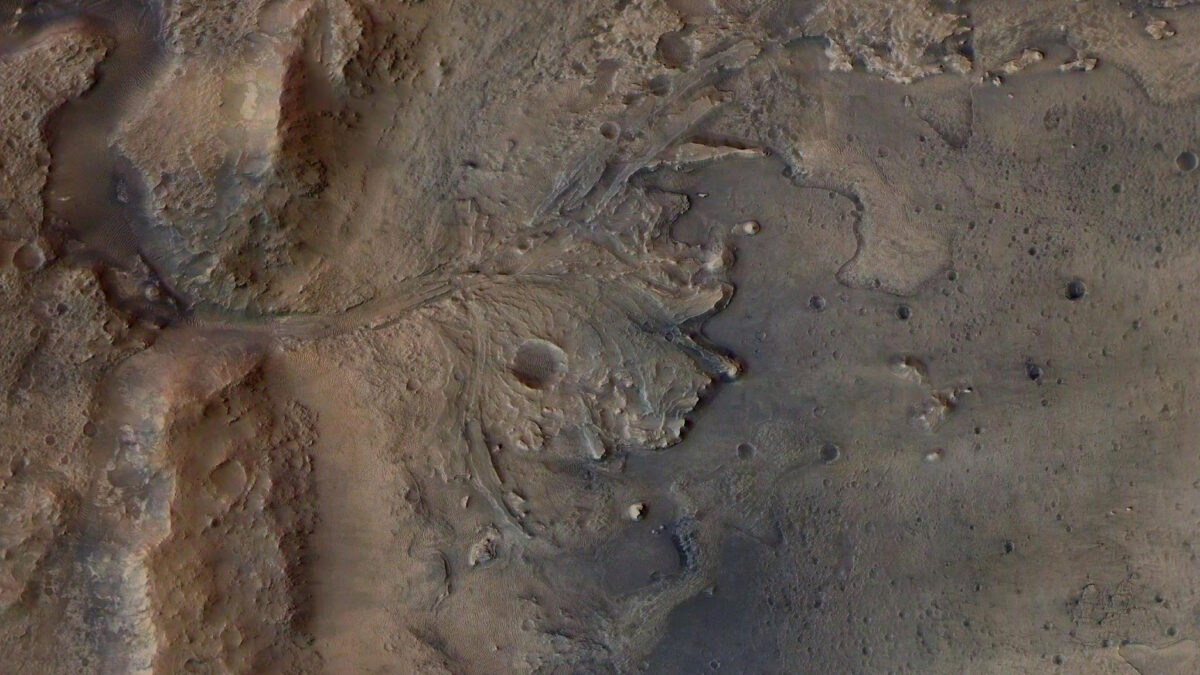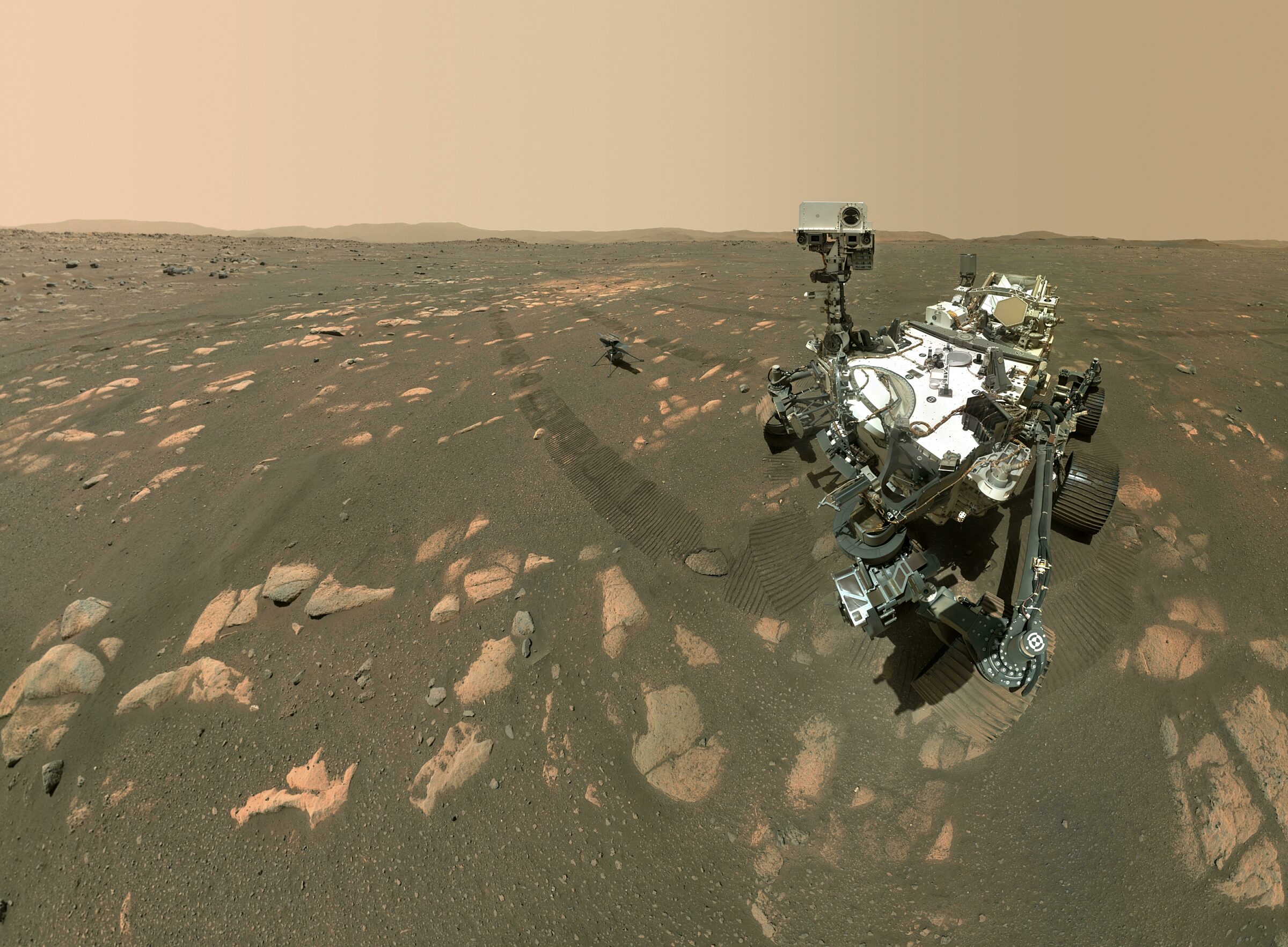Perseverance, NASA's newest Mars rover
Highlights
- Perseverance is a NASA Mars rover that landed on Feb. 18, 2021.
- The rover is searching for past life on Mars and collecting soil and rock samples for future return to Earth.
- Getting Perseverance's samples back to Earth will require at least two missions that are currently being planned by NASA and the European Space Agency.
What is Perseverance's mission?
Did life ever arise on Mars? For years, NASA’s Mars Exploration Program has been systematically trying to find out. The agency’s Spirit and Opportunity rovers showed that liquid water once existed on the surface. Building on that discovery, NASA's Curiosity rover found conditions on Mars around 4 billion years ago could have supported life as we know it. Now, Perseverance will directly search for signs of past life.
Perseverance launched on July 30, 2020 amidst the added challenge of the global COVID-19 pandemic. On Feb. 18, 2021, it landed in Jezero crater, the site of an ancient lake and river
delta. There, the rover is searching for microbial fossils in rocks that formed in Mars’ warm, wet
past. It is also looking for carbon-containing molecules called organics that form the building blocks of life on Earth. Not since 1976 has NASA directly searched for life on Mars, when the dual Viking landers performed long-shot chemistry experiments that turned up inconclusive results.
Perseverance is collecting soil and rock samples as it travels, and storing them in tubes that future missions by NASA and the European Space Agency will collect. Despite technological advances in making small, low-power science instruments for space missions, many types of laboratory analyses still can’t be performed in space or can’t be done very precisely. Additionally, science is all about being able to reproduce results; getting Perseverance’s samples back to Earth means we could run the same science experiments in multiple laboratories.
The mission is projected to cost $2.7 billion. The Planetary Society has additional context to help you fully understand this number.

Inside Perseverance's design
Perseverance is a 1-ton, six-wheeled Mars rover the size of a compact car. Based on the same design as nuclear-powered Curiosity, Perseverance can operate through dust storms that block sunlight required by solar-powered spacecraft. To land, Perseverance improved upon the complex seven-minute landing sequence referred to as the “seven minutes of terror.” The landing involved a supersonic parachute, a thruster-powered descent, and nylon cords that lowered Perseverance the final few meters to the surface.
Using images from navigation cameras placed strategically around the rover, as well as imagery from orbital satellites such as NASA’s Mars Reconnaissance Orbiter, scientists and mission operators work together to drive Perseverance to promising science areas. If a spot seems particularly interesting, Perseverance collects a sample, seals it in a small tube, and leaves the tube on the surface for return to Earth.
What instruments does Perseverance have?
At the heart of Perseverance’s life-scanning tools are two Raman spectrometers — science instruments that shine ultraviolet light on a rock or soil patch and read the reflected light signature to determine what chemical compounds are present. Raman spectrometers are particularly well-suited to detecting organic compounds related to life as we know it. Perseverance has one on its robotic arm named SHERLOC, and another inside SuperCam, an instrument at the top of the rover’s mast that also contains a laser to zap rocks up to several meters away.
Perseverance is looking for signs of microscopic life using PIXL,
a camera mounted to its robotic arm that can see features as small as a
grain of salt. On Earth, we’ve found microscopic bacteria fossils in rocks more than 3.5 billion years old. None of Perseverance’s discoveries would make sense without other science instruments to place discoveries in the proper context; particularly Mastcam-Z, two zoomable color cameras atop the rover’s mast that serve as its eyes. The Planetary Society is an education and outreach partner for the instrument.
At the rover’s lower-rear is RIMFAX, a radar that can detect pockets of water up to 10 meters beneath the surface. Scientists suspect that some of Mars’ ancient water seeped underground, where it could still host living organisms. Also aboard Perseverance is a weather station called MEDA, as well as MOXIE, a car battery-size device that will extract carbon dioxide from Mars’ atmosphere and produce oxygen, just like a tree on Earth. MOXIE will demonstrate the feasibility of manufacturing oxygen on Mars for future astronauts to breathe and use as rocket fuel.

Ingenuity, NASA's Mars helicopter
Perseverance’s belly carried a small helicopter drone named Ingenuity. Once on Mars, Perseverance lowered Ingenuity to the surface and moved 100 meters away so that Ingenuity could safely perform test flights. Ingenuity explored the rover’s surroundings until its 72nd and final flight on Jan. 18, 2024. As a technology demonstration, Ingenuity is not tied to Perseverance’s mission success, but we learned important lessons about the feasibility of flying vehicles on other worlds. In the 2030s, NASA’s Dragonfly spacecraft, an 8-bladed drone-like vehicle called a rotorcraft, will explore Saturn’s largest moon Titan.
Planetary Society involvement
Perseverance's microphones recorded the first-ever sounds from Mars. The concept dates back to 1996, when Planetary Society co-founder Carl Sagan first approached NASA with the idea. Two years later, a Planetary Society-funded microphone launched aboard NASA’s Mars Polar Lander, marking the world’s first crowdfunded science instrument to fly to another planet. Sadly, the lander crashed.
Support missions like Perseverance
Whether it's advocating, teaching, inspiring, or learning, you can do something for space, right now. Let's get to work.


 Explore Worlds
Explore Worlds Find Life
Find Life Defend Earth
Defend Earth


